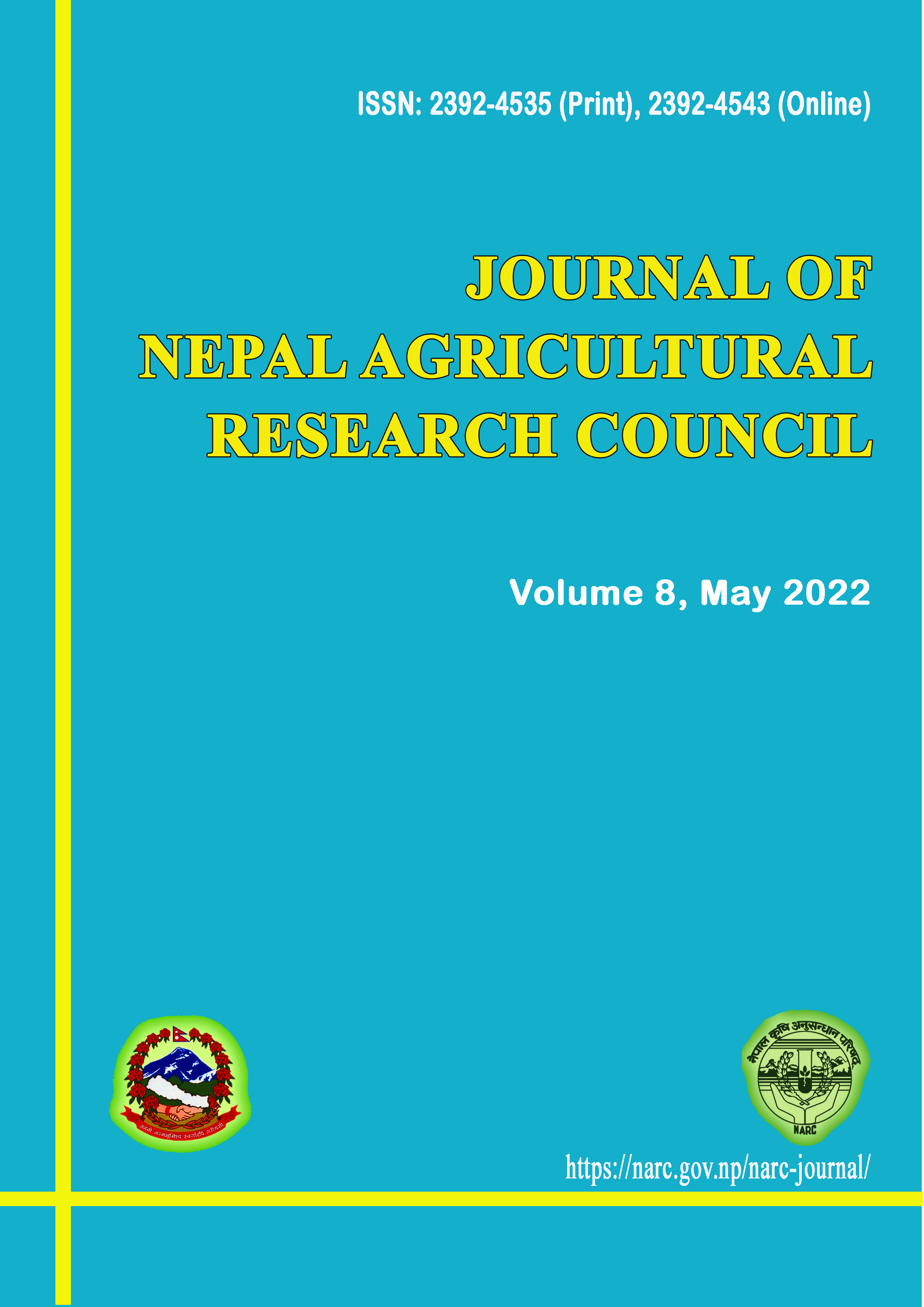Production Performance and Nutrient Composition of Fodder Triticale (x Triticosecale W.)
DOI:
https://doi.org/10.3126/jnarc.v8i.44871Keywords:
Biomass, dry matter, nutrient content, seed, TriticaleAbstract
A study was undertaken to compare the productivity and nutrient compositions of different varieties of fodder triticale (xTriticosecale W.) from 2019 to 2021. The experiments were laid-out in a Randomized Complete Block Design with four treatments consisting three varieties of triticale (Winter Max, Crack Jack, and Bolt) and one local wheat variety (as a check), with three replications. The fodder dry matter (DM) yields of evaluated varieties significantly varied (p<0.05) in 2020 and in 2021, although it was non-significant in pooled data analysis of three years. The interaction effects of the varieties and locations on fodder dry matter yield were non-significant in 2019, 2020 and pooled data analysis of three years but was significantly different in 2021. The seed yield was statistically different for the varieties in different years and also in pooled data analysis. Similarly, the interaction effects of varieties and locations were significantly different in seed yields in all three years. The seed yields were significantly different for the fodder triticale varieties in both the locations and pooled data analysis. The interaction effects of varieties and years were significant for seed yields. The average protein percentage was ranged from 8.88 to 10.39%. Bolt performed well in terms of dry matter and Winter Max did well in terms of seed production in different years while Crack Jack was found to be best for the protein percentage. The temporal and spatial effects on varieties indicate the need of the further niche or region-specific studies.
Downloads

Downloads
Published
How to Cite
Issue
Section
License
Copyright (c) 2022 Nepal Agricultural Research Council

This work is licensed under a Creative Commons Attribution-NonCommercial 4.0 International License.
This license enables reusers to distribute, remix, adapt, and build upon the material in any medium or format for noncommercial purposes only, and only so long as attribution is given to the creator.



